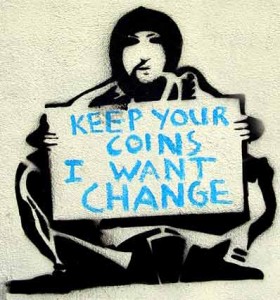 Many commentators, bloggers and enthusiasts in the payments industry are out there predicting the rise of the next big thing in payments – “This is the year for NFC”, “Smartphone payments to dominate”, “Tipping point for contactless”, etc. There are 2 key factors, aside from wanting to be the one who first picked the trend, driving this kind of thinking.
Many commentators, bloggers and enthusiasts in the payments industry are out there predicting the rise of the next big thing in payments – “This is the year for NFC”, “Smartphone payments to dominate”, “Tipping point for contactless”, etc. There are 2 key factors, aside from wanting to be the one who first picked the trend, driving this kind of thinking.
Firstly, there is a proliferation of exciting new technology out there, finally coupled with widespread availability. We are now at the point where cards and terminals are NFC capable and have widespread dissemination, meaning a statistically significant part of the population finally has access to this payment technology. We are also at a point where online payments are mainstream and smartphone penetration has taken the online experience mobile. Lots of new payment applications are now built for smartphone’s, moving payments to the mobile spectrum and making them more immediate and accessible.
In fact there is a variety of new ways in which technology is driving availability and ease of use for payments. Savvy payment companies, taking the initiative away from the normally glacial movement of the traditional banking world, are driving most of this new technology. These companies are innovating technology around payments at a pace that is exciting, new, and interesting enough to catch our eye.
The second factor is the manner in which technology is impacting our lives outside of payments. A common word being touted for successful technology companies these days is “disruptive”. As a word it’s a fair assessment of how a new technology (generally software driven) is seismically changing how our world works. This is happening in many different industries and in many different ways and there are high profile poster companies such as Groupon, Instagram, Atlassian, Dropbox, Apple, Facebook, etc, etc, that are changing the paradigm of how we operate our lives.
No one wants to miss the emergence of a disruptive new technology in payments that could forever change the payments landscape. We therefore get wild claims that now is the time that the payments world will change forever. The truth is that the world of payments is least open to disruption of any industry worldwide.
Payments (and more importantly the funds they access) are heavily regulated, subject to high levels of security, monitored through many layers of compliance, and rightly so. Even with wholesale consumer demand there is a compelling argument not to leap headfirst into new technology until it is proven safe and effective, and this takes time.
The banking and payments industry moves relatively slowly partly because it is inherent in its DNA, but also because it cannot afford to jeopardize the funds it controls and ultimately the customer relationship on which that is based. This means that, as an industry it must not allow itself to be “disrupted” by new technology.
Surprisingly, consumers also move slowly when it comes to payments. If there’s one thing we’re excessively protective of in this world it is that which we have accumulated financially. So while there remains any doubt over the robustness and security of new technology we take our time to switch to using it, and we preserve more traditional methods as backup.
In the end the payments world is moving to NFC, smartphone, and online payment mechanisms, but its not leaving behind cards, terminals, ATM’s and cash. Our payment methods will simply continue to become more prolific and widespread. We will continue to adopt new technology and methods of payment, just as they will continue to sit alongside traditional payment methods for some time yet. The “disruption” of new technology in payments will not be measured in the months of other industries but over a much longer period.
© 2012 521 Group. All Rights Reserved.
